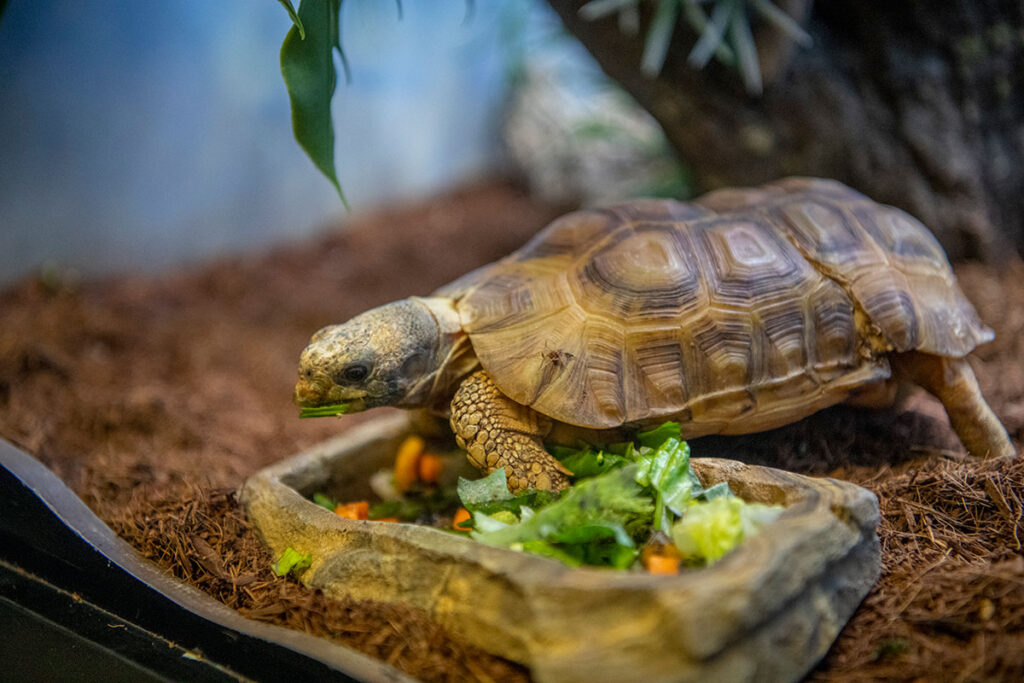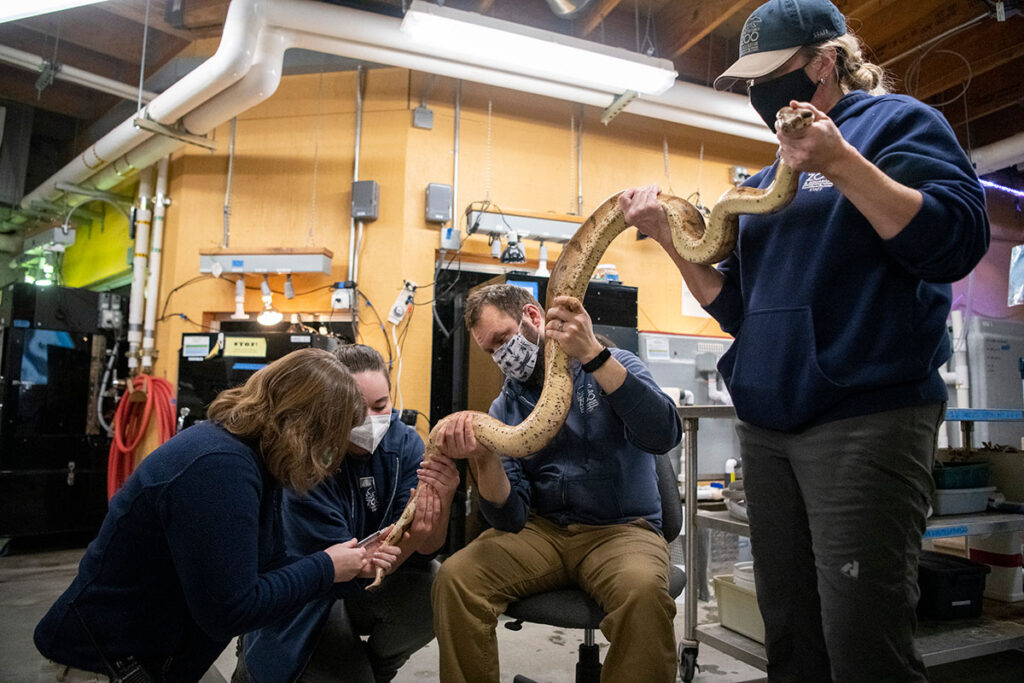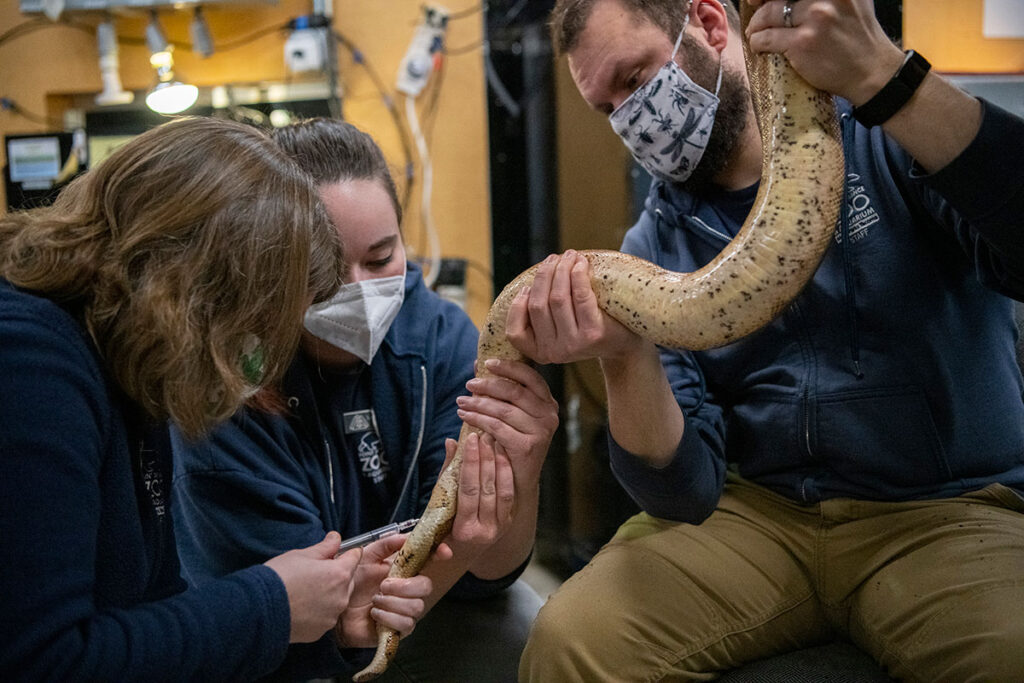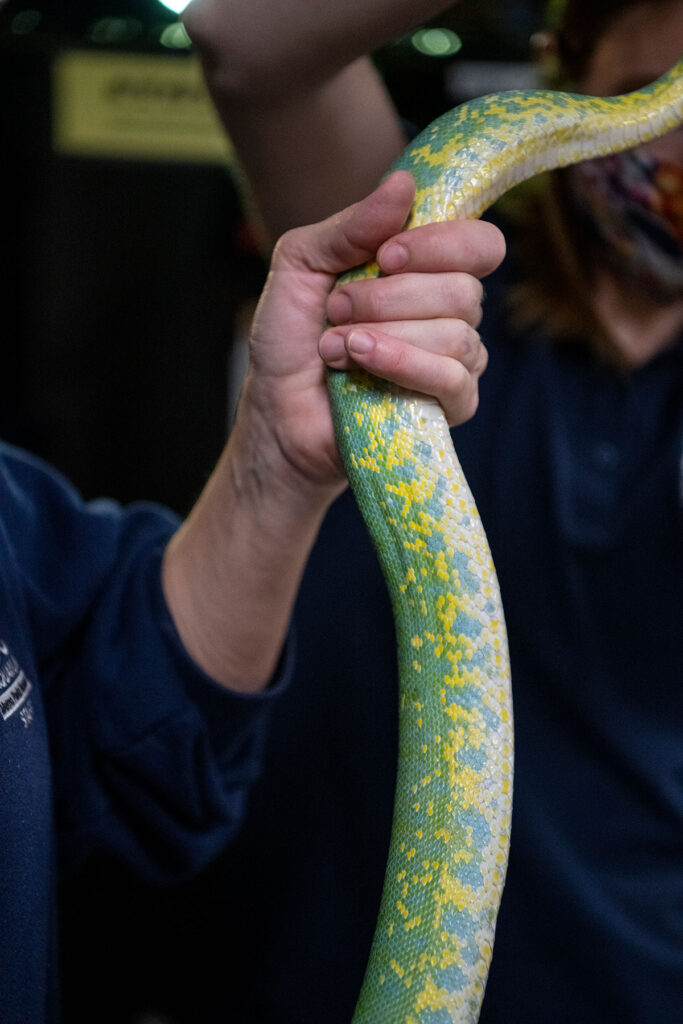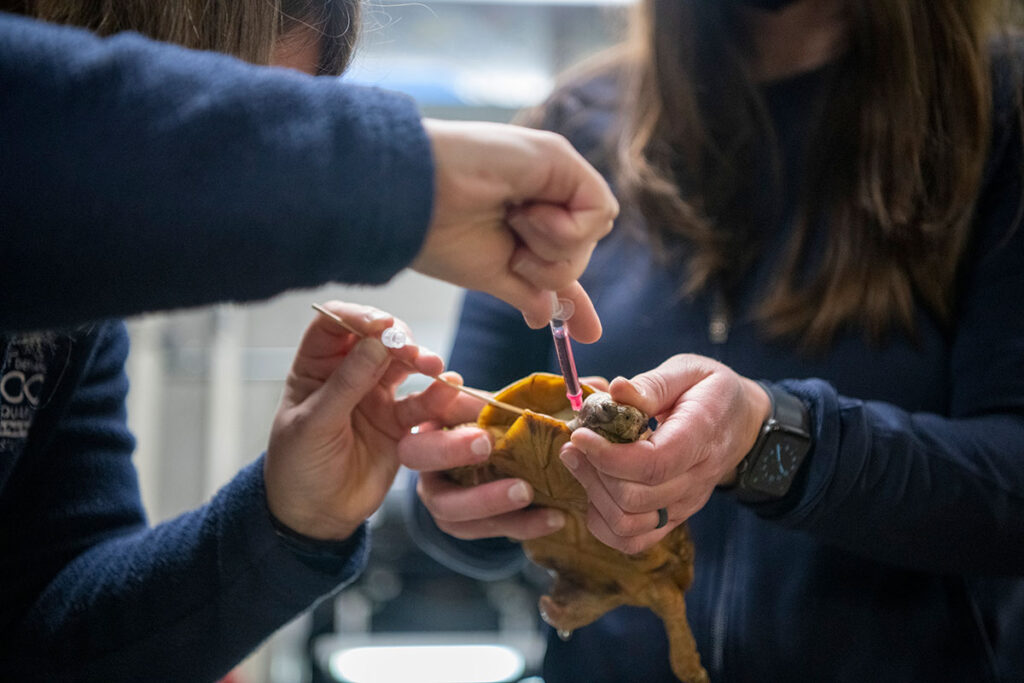What takes up to 10 hands, a calm demeanor, incredible skill … and maybe a little luck?
Try drawing blood from a snake.
Unlike some species, snakes don’t have visible veins. Some snake veins are also incredibly small, which can make collecting their blood a laborious challenge.
“We have to perform a ‘blind’ stick,” Associate Veterinarian Dr. Kadie Anderson said. “This means that we try to get blood from the vein using anatomical landmarks, rather than seeing or feeling the vein.”
The snakes at Point Defiance Zoo & Aquarium’s Kids’ Zone recently received comprehensive physical exams, which are performed annually and included X-rays to screen for any abnormalities.
The veterinary staff weren’t able to collect enough blood. So after giving Alduin the axolotl an exam the following week, they decided to go for Round 2 with the snakes – and performed a checkup with Griddle the pancake tortoise just for good measure.
Collecting blood from an animal can tell the Zoo’s animal care and veterinary teams a lot about what’s going on with each individual since the animals can’t always express how they are feeling.
“Reptiles are very good at hiding a disease or illness,” Dr. Anderson said. “So bloodwork is a key part of evaluating their health.”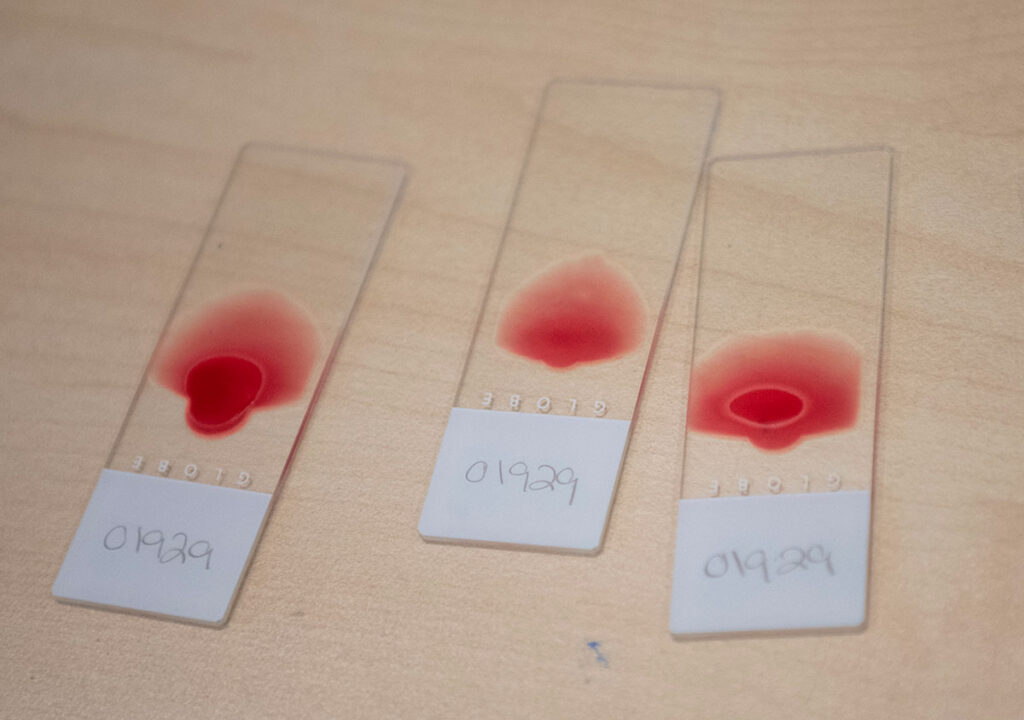
Veterinary technicians perform in-house processing of blood samples and then send them to a lab to check for a complete blood count and blood chemistry, which screen for health conditions that might not be apparent on a physical exam (such as liver or kidney disease).
The veterinary technicians’ in-house processing is vital. They spin down the blood to collect serum or plasma and make blood smears. If the blood smears aren’t made right away, the cells can change their appearance and alter the results.
Roano
Central American boa Roano, who is about five feet long, slithered up first. He’s the Zoo’s longest snake, so the exam required all hands on deck to hold him while Dr. Anderson collected blood.
“We ensure that the snakes experience calm and consistent handling, which builds trust,” Assistant Curator Donovan said. “The rare times we need to restrain them, we continue with the calm handling techniques. And when the procedure is done we continue handling them as if nothing happened so it ends on a positive note.”
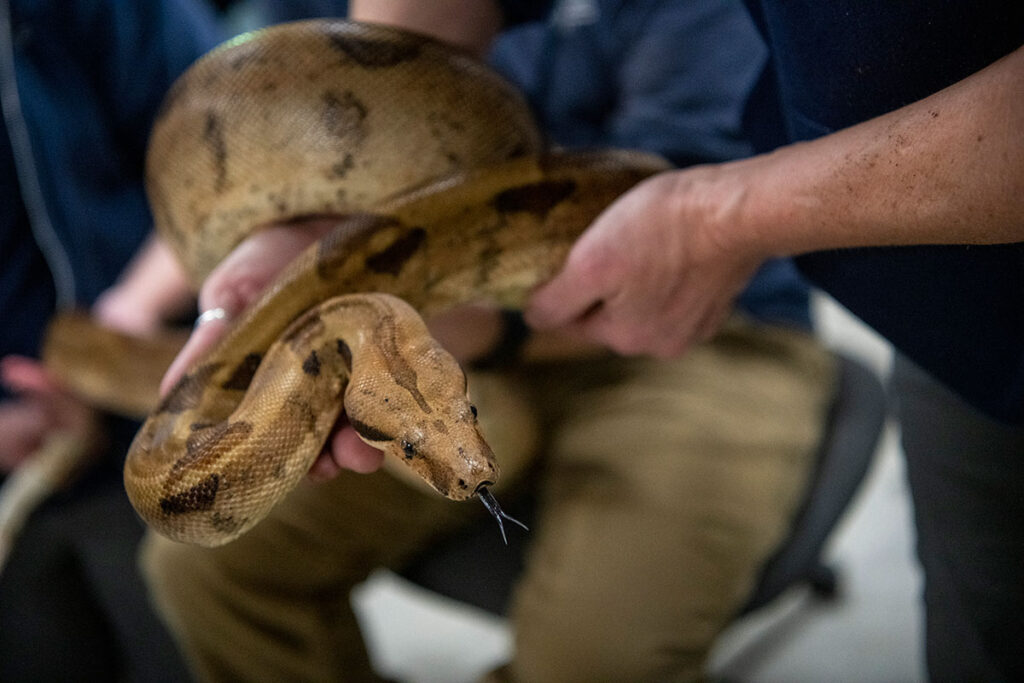 Roano was a confiscated pet. He is now an animal ambassador for his wild counterparts, highlighting responsible pet choices and how the illegal pet trade can adversely affect animal populations.
Roano was a confiscated pet. He is now an animal ambassador for his wild counterparts, highlighting responsible pet choices and how the illegal pet trade can adversely affect animal populations.
Blade
Blade, a green tree python who was hatched in 2006, was next.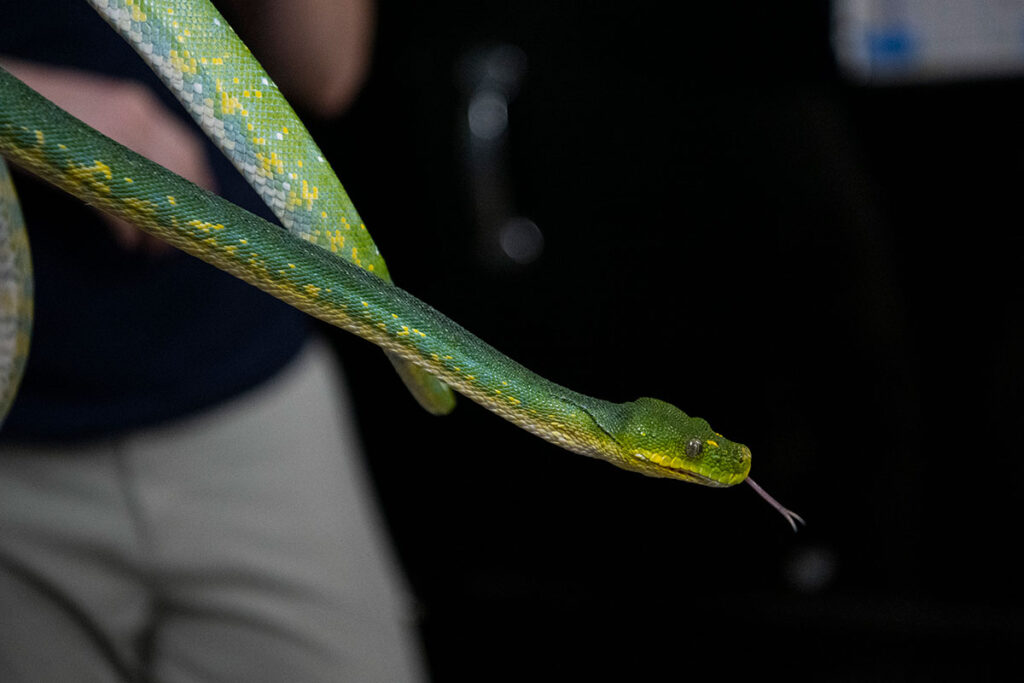
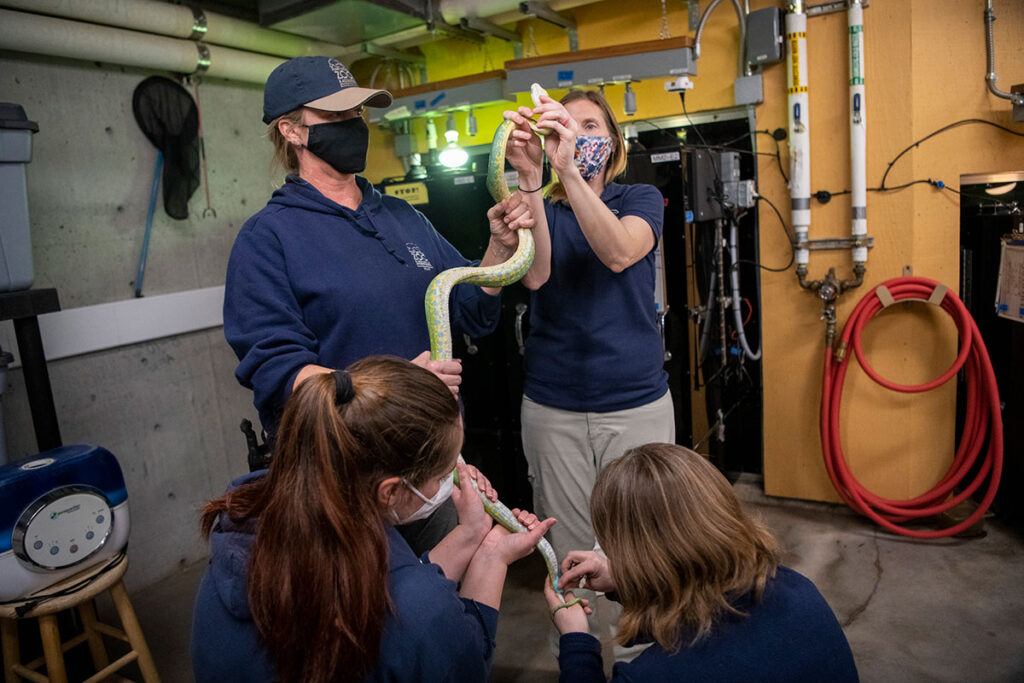
Blade, like most snakes, has a prehensile tail, which means he can intentionally grasp an object.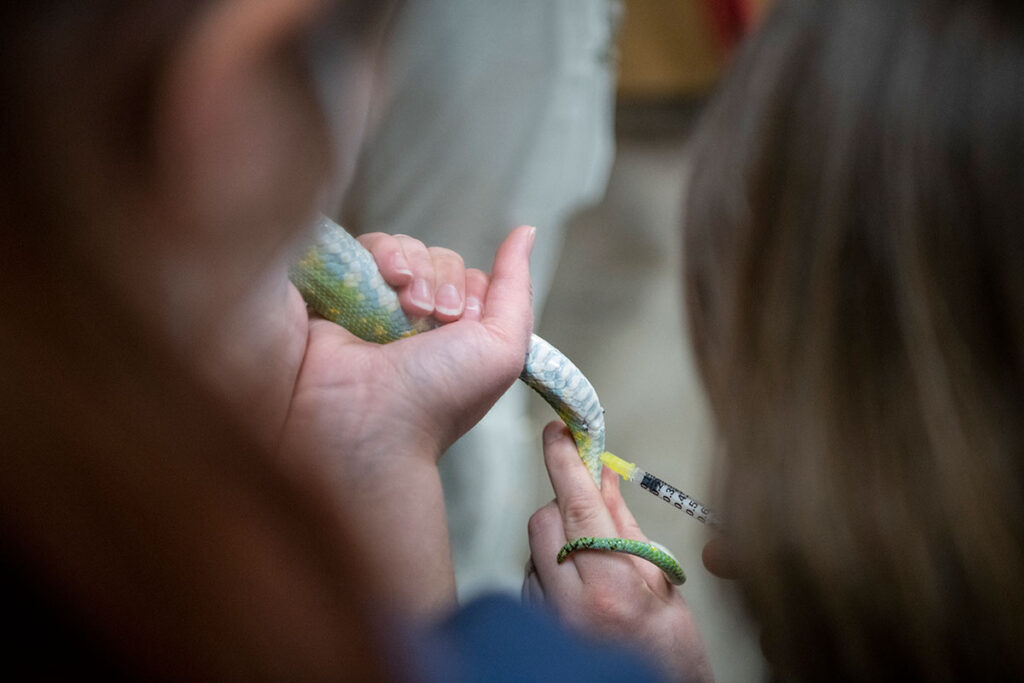
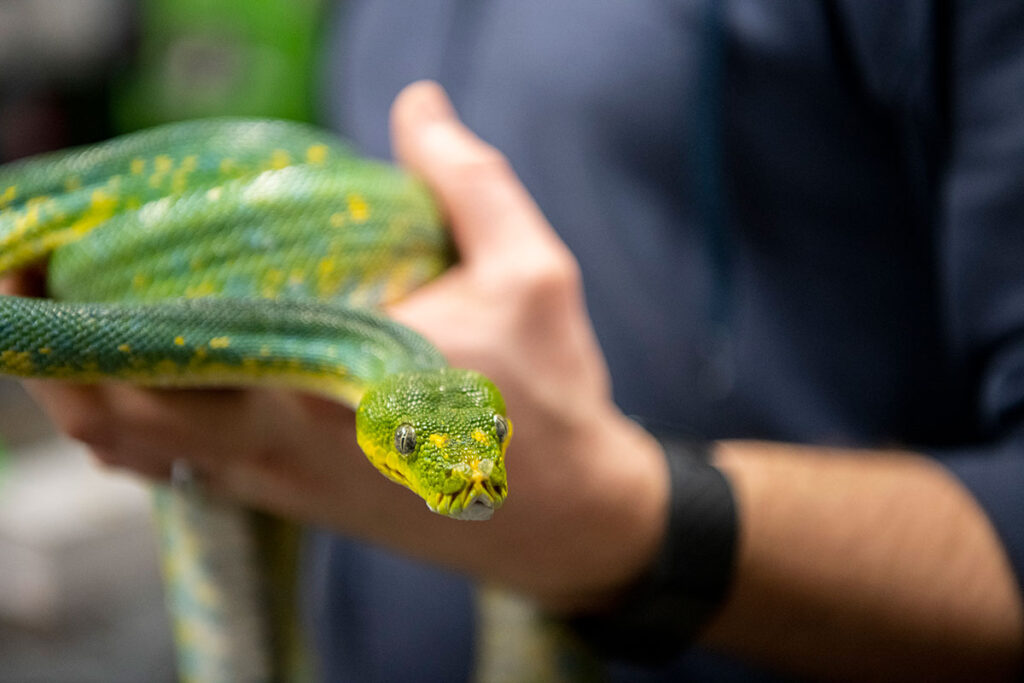
Muzo
Emerald tree boa Muzo was the last of the day’s snake blood draws, and she had the feistiest personality of the day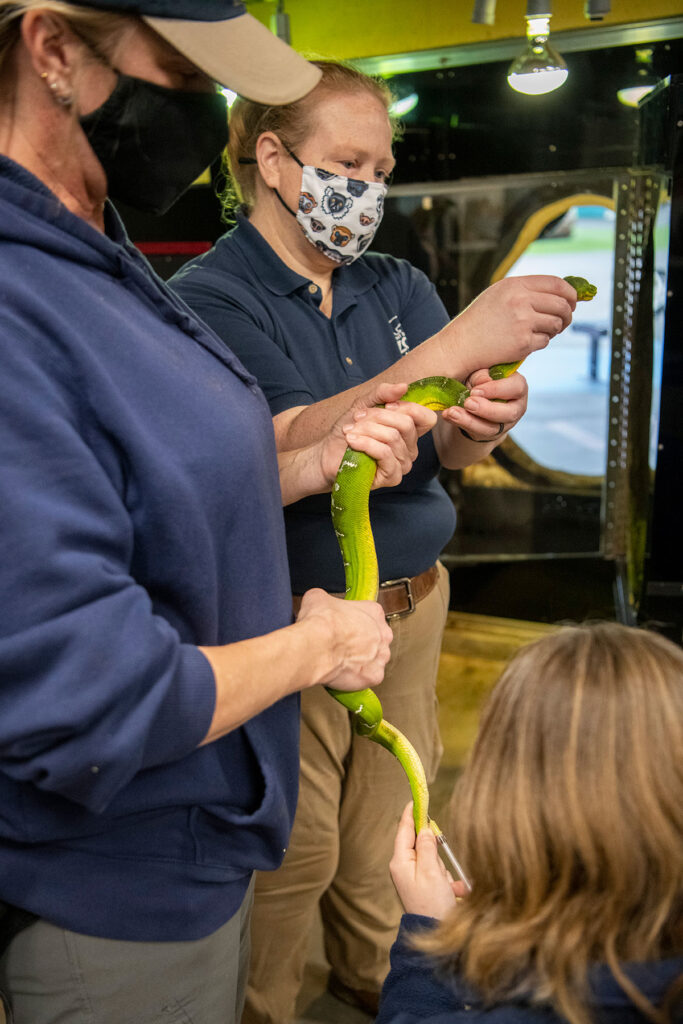 After their blood draws, Blade and Muzo ate their mice, which they are offered every other week.
After their blood draws, Blade and Muzo ate their mice, which they are offered every other week.
Griddle
Veterinary staff have been monitoring the vitamin D levels in Griddle the pancake tortoise over the past year. After the snake blood draws, they decided to take the opportunity to make sure Griddle’s levels weren’t elevated.
Pancake tortoises have softer and more flexible shells than other tortoises, so the shells do not provide as much protection from predators. If threatened, they don’t withdraw into their shells. Instead, they dash for the nearest rocky shelter.
Fabulousssssss Health
On this day, Dr. Anderson and the veterinary team collected a sufficient sample from everyone – an incredible accomplishment. All of the reptiles were found to be in good health.
Just another step in the extraordinary care these teams provide to the Zoo’s animals every day.
You can see each of these reptiles at the Zoo’s Critter Corner stage or in one of the Close Encounter areas during the longer, warmer days. Blade, Muzo and Griddle can also be seen daily in their Kids’ Zone habitats.